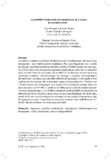| dc.description.abstract | This paper looks at a key aspect of new immigrants’ settlement experience— finding a home. Specifically, we examine the factors determining the propensity, over the first six months of settlement, to remain in or move on from the first residence occupied since arrival in Canada. We consider in turn the effects of various household and individual characteristics, and examine how these effects vary by urban region. Our data source is the first wave of observations from the Longitudinal Survey of Immigrants to Canada (LSIC), which covers a sample of 12,040 people who arrived in Canada as landed immigrants between October 2000 and September 2001. Semi-parametric survival models are used for the analysis. We find that while the residential mobility of this cohort in the initial months after arrival is associated with certain individual- and household-level characteristics, the strongest association is with the type of housing occupied. The city of residence of these newcomers, however, has little bearing on their housing transitions. | en_US |


